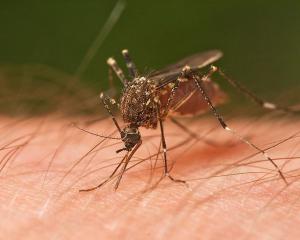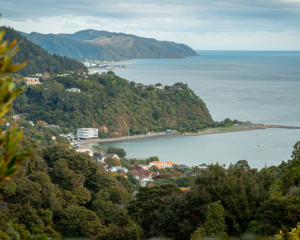Mount Tongariro has erupted, sending a massive plume of ash skyward.
The eruption came from Te Maari crater, on the western side of the mountain, about 1.30pm.
A massive plume of ash could be seen coming from the mountain.
GNS Science duty volcanologist Nico Fournier told APNZ the eruption happened about 1.20pm.
"There was one eruption, essentially one explosion, and it was not sustained. It spewed some ash possibly a couple of kilometres up the air. The ash is now drifting to the east-southeast."
Dr Fournier said the eruption was not very loud and was smaller than an earlier eruption in August.
Dr Fournier was a few kilometres away when the eruption happened and said while he was safe, he had "a good view of the explosion".
"It was remarkable a few minutes ago, now it's dying off," he said about 20 minutes after the explosion.
"When it happened you had a column of the ash which spewed in the air vertically, and then essentially the source of that eruption just stopped."
The ash was now drifting away, he said.
Tongariro, in the centre of the North Island, erupted in August for the first time in 115 years, sending ash as far east as Napier.
According to GeoNet, Tongariro is a complex of multiple volcanic cones constructed over a period of 275,000 years.
The mountain's active vents include Te Maari, Emerald, North Crater and Red Crater.
Last week GNS Science increased the likelihood of neighbouring volcano Mt Ruapehu erupting, following increased activity on the mountain.
GNS Science has increased the aviation colour code from yellow to red following the eruption. The red status means an eruption ``is forecast to be imminent with significant emission of ash into the atmosphere likely''.
A police spokesman said Desert Road remains open.
Adrift NZ, which runs tours of the Tongariro Alpine Crossing, had around 50 people on the mountain today.
Operator Stewart Barclay, who chairs a group of 30 users of Mt Tongariro, was heading to Mt Tongariro to help his guides and their groups off the mountain.
"I'm just going to make sure everyone is safe ... from my guide's perspective and from what I've heard, it seems minor.''
Mr Barclay understood the eruption had launched no projectiles into the air.
"I've just talked to one of my guides and he is taking the safe route out. There was a minor amount of panic and everyone is safe now, there were no injuries.''
Dr Fournier said there was "quite a bit of gas'' but it was quietening down.
The next step was to work with the Department of Conservation (DoC) and authorities to make sure people in the area were safe.
"That's going to be the top thing, so right now we are actually with DoC and liaising with the authorities just to make sure that everybody is aware that there was an eruption, how big it was and where the ash is going.
"Then the authorities will take it from there, if there is any action to be made.
"But at the moment it's probably much less of a big eruption than it was in early August.''
The Ministry of Civil Defence and Emergency Management issued a national advisory just under an hour after the eruption.
It said "minor volcanic activity'' at Tongariro's Te Maari craters could be hazardous in the immediate vicinity.
Light volcanic ashfall was anticipated downwind of Tongariro and could fall in Waikato, Hawkes Bay, Gisborne and Bay of Plenty.
People living in or near the affected areas were advised to stay indoors and close windows and doors if ash fell. People who were outdoors should seek shelter.
Civil Defence said ash could be a health hazard, especially for people suffering breathing difficulties.
People affected by ashfall should wear a dust mask cover their nose and mouth and protect their eyes.
A woman who lives near the mountain said sulphur-smelling ash had been raining down on her home.
Robyn Bennett, who lives 6km from the mountain, said she could see the plume of ash rising into the sky.
"It's sitting under some cloud and that's why it's pushing down onto us," she said.
"It smells worse than rotten eggs.''
Ms Bennett said the eruption was silent.
She said she spotted a vent today that wasn't there yesterday.
She didn't think she and her husband would need to evacuate, "not unless she starts spewing out a whole lot of red rocks", but they were waiting to hear from Civil Defence or the Department of Conservation.
Ms Bennett was not worried about the eruption.
"Why worry? You haven't got time to worry at this stage.''
The ash was drifting south east towards Mt Pihanga, she said.













